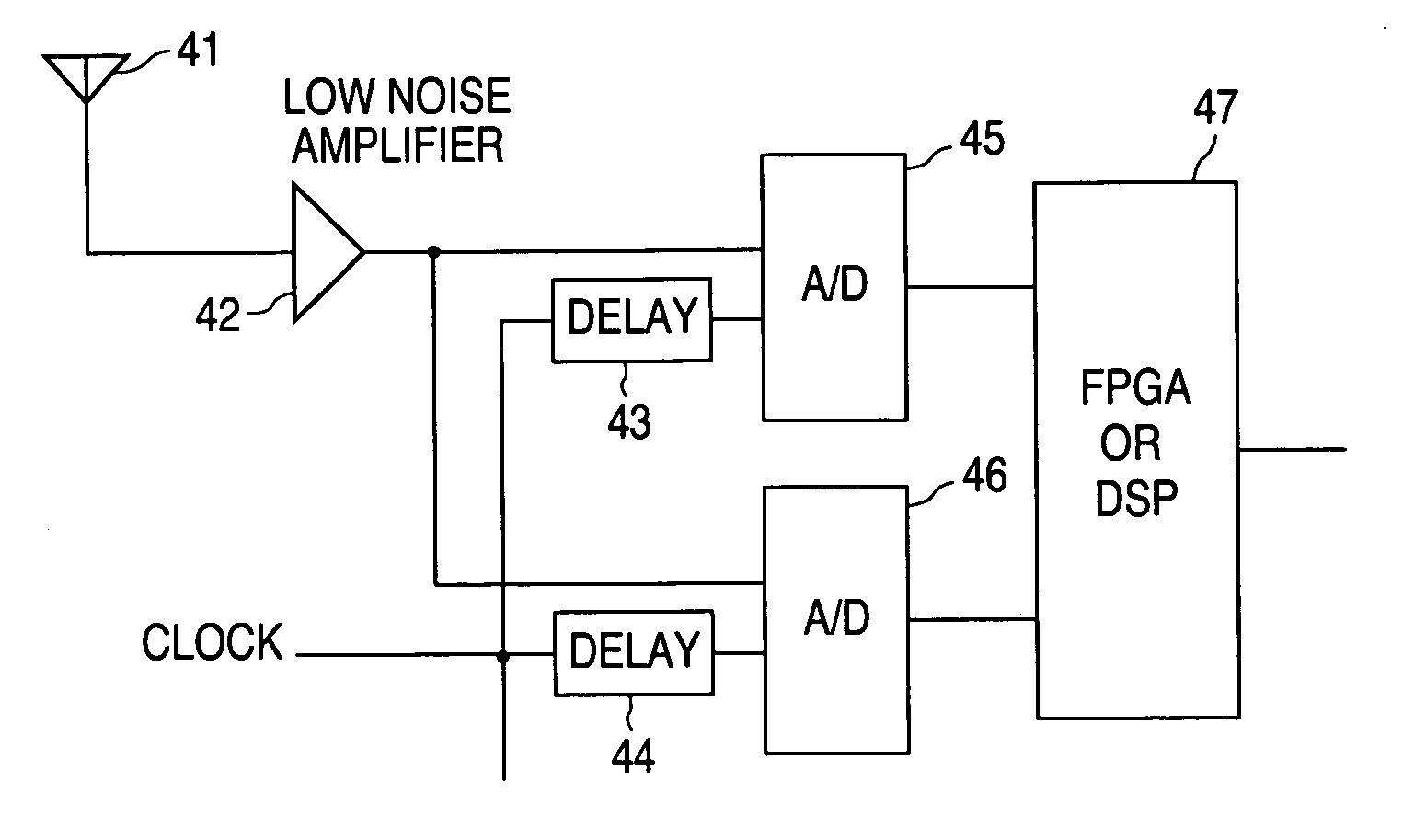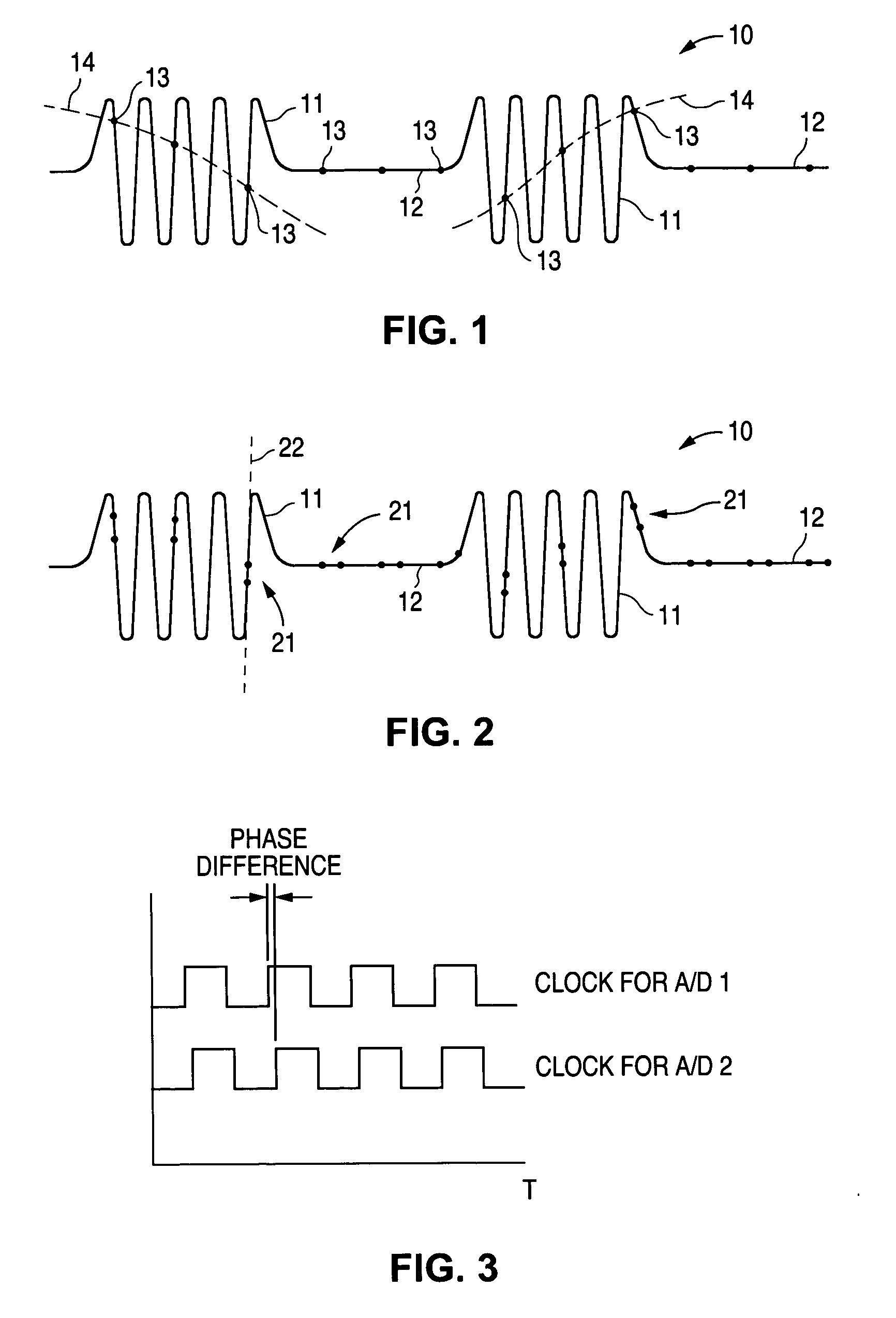RFID receiver with digital down conversion
a receiver and digital down conversion technology, applied in the field of radio frequency identification, can solve the problems of different carrier frequency in other countries, and high cost of rfid readers, so as to facilitate demodulation of signals and facilitate frequency determination
- Summary
- Abstract
- Description
- Claims
- Application Information
AI Technical Summary
Benefits of technology
Problems solved by technology
Method used
Image
Examples
Embodiment Construction
[0024] An RFID receiver uses direct digital down conversion to facilitate determination of the frequency of a radio frequency signal from an RFID tag and to facilitate demodulation of the signal. The receiver can be used in either an RFID tag verifier or an RFID reader. RFID tag verifiers are used to check the operability and programming of RFID tags, typically as part of the manufacturing process thereof. RFID readers are used to scan products, such as in retail stores and warehouses.
[0025] According to one embodiment of the present invention, an analog-to-digital converter is configured so as to undersample a radio frequency signal from an RFID tag. Undersampling, as discussed in detail below, results in frequency down conversion of the RFID signal. As those skilled in the art will appreciate, down conversion provides a lower frequency signal that can more readily be processed.
[0026] According to one embodiment of the present invention, two analog-to-digital converters can be co...
PUM
 Login to View More
Login to View More Abstract
Description
Claims
Application Information
 Login to View More
Login to View More - R&D
- Intellectual Property
- Life Sciences
- Materials
- Tech Scout
- Unparalleled Data Quality
- Higher Quality Content
- 60% Fewer Hallucinations
Browse by: Latest US Patents, China's latest patents, Technical Efficacy Thesaurus, Application Domain, Technology Topic, Popular Technical Reports.
© 2025 PatSnap. All rights reserved.Legal|Privacy policy|Modern Slavery Act Transparency Statement|Sitemap|About US| Contact US: help@patsnap.com



